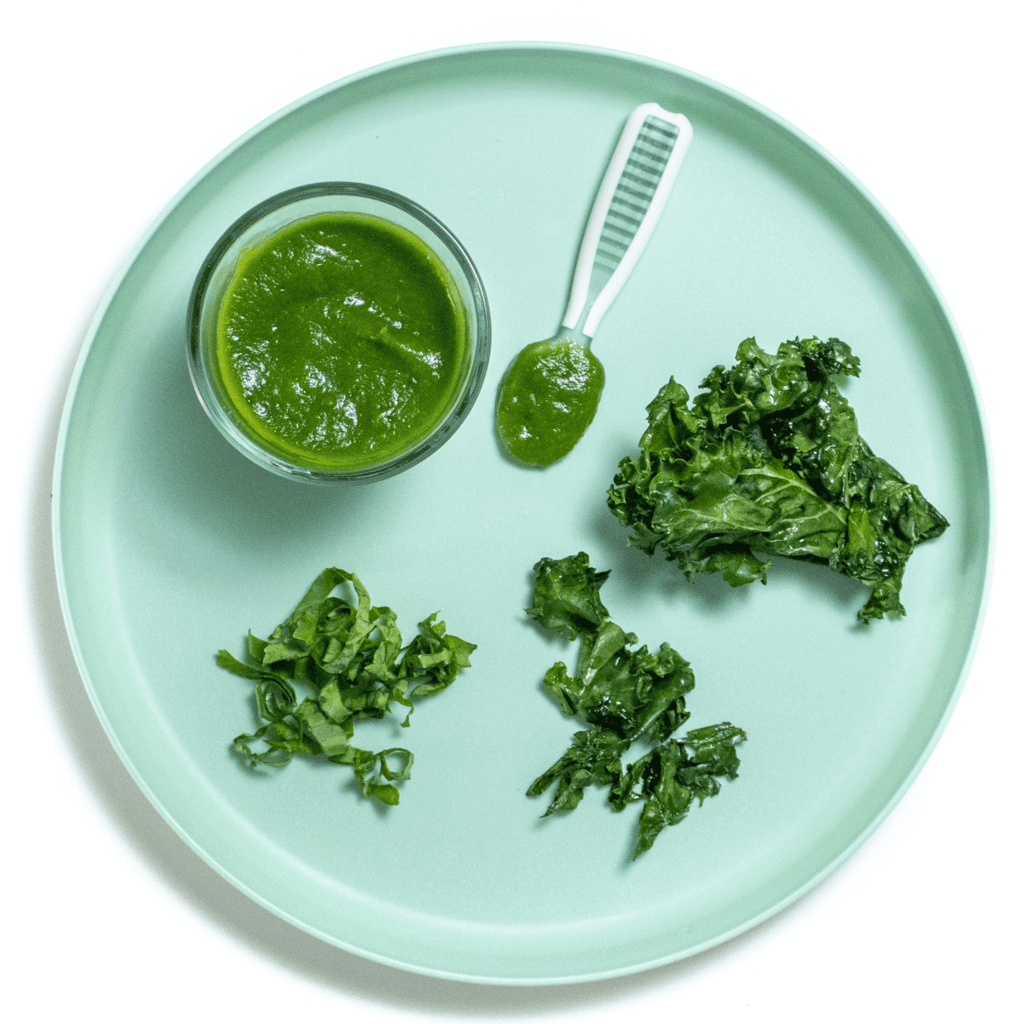Learn how to serve kale for purees and baby-led weaning with our informative guide. A rich source of several vitamins and minerals, this leafy green is also great for supporting healthy digestion in babies and toddlers. Great for 6+ months!
Medically reviewed and cowritten by Jamie Johnson, Registered Dietitian Nutritionist (RDN), and Lauren Braaten, Pediatric Occupational Therapist (OT).
Kale Baby Food
Leafy greens like kale might not be one of the first foods you think of to serve for your baby. But this nutritional powerhouse of a veggie is packed with vitamins A, C, and K, as well as calcium, magnesium, potassium and copper. Plus, kale is a good source of fiber, so it’ll help your little one with digestion.
However, you may be wondering, how do I serve kale to my baby? Can I serve my baby kale puree? Do I have to do baby-led weaning to serve kale? I’ve got you!
In this guide, we’ll answer those questions and cover all the information you need in order to serve kale for baby-led weaning and puree feeding. Learn about the benefits of kale for your baby, FAQs, helpful tools and expert feeding tips.
First time making homemade baby food? Then, I would suggest that you start by reading our very in-depth guides – Guide on how to Make Homemade Baby Food if you are starting with purees, or this Complete Guide to Baby-Led Weaning if you decide to do baby-led weaning from the get-go. And be sure to check out my best-selling cookbook, Little Foodie: Baby Food Recipes for Babies and Toddlers with Taste for even more information and recipes!
Reasons to Love Kale for Baby
- Delicious baby food purees – 6+ months
- Great for baby-led weaning – 6+ months
- Also great for the finger food stage – 9+ months
- Full of essential nutrients for baby
- Different ways for baby to eat – spoon-fed or self-feed
- Easy to make – minimal prep work required
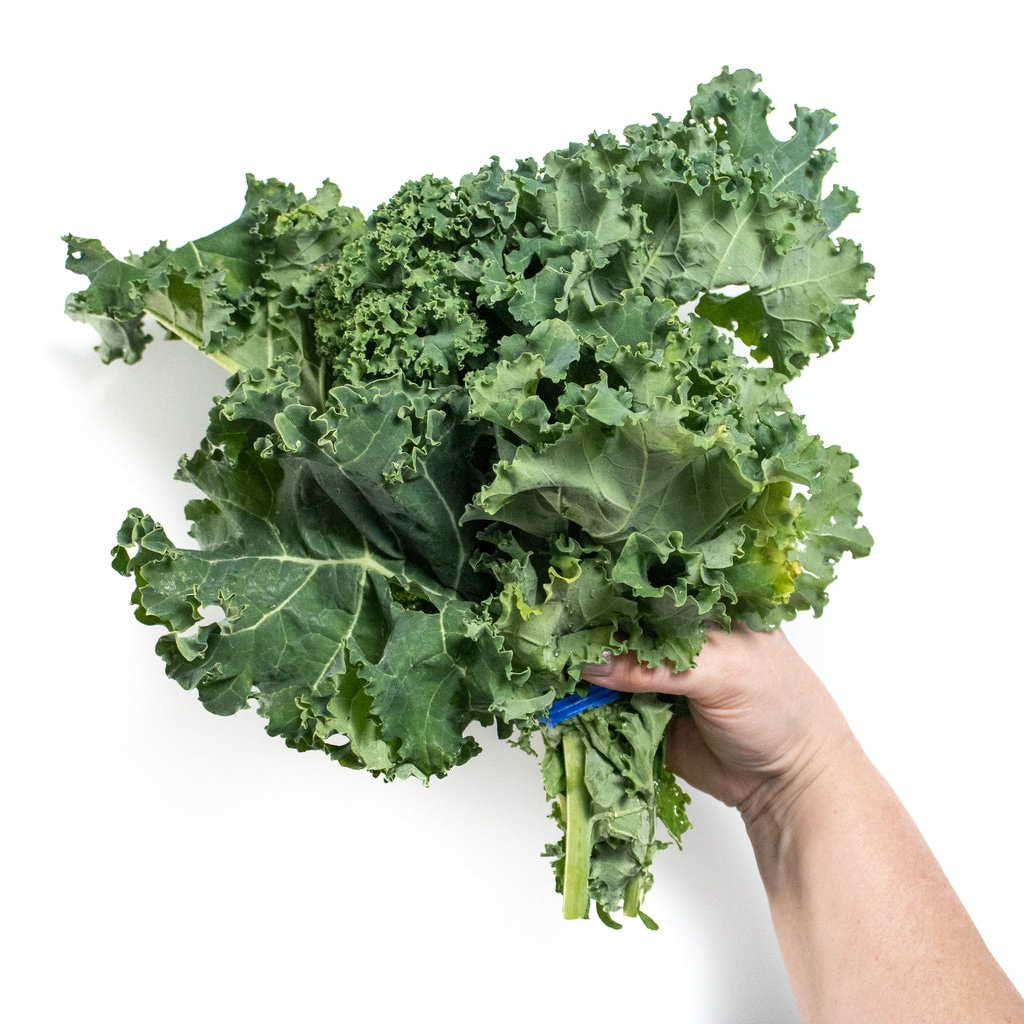
Benefits of Kale for Baby
Just like for adults, kale for babies is excellent and full of nutrients to help support their little growing bodies.
- Kale is a good source of vitamin C, which help with immune function, and when paired with iron foods, helps with iron absorption.
- It is also very high in vitamin K, which is necessary for bone health and blood clotting.
- Kale has many antioxidants to help fight against chronic inflammation and diseases like cancer.
How to Pick Kale
Here are some pointers on how to choose kale:
- Color: Look for kale that has bright, sturdy, and rigid leaves without any wilting. Avoid those with brown, yellow, or bruised leaves.
- Organic: Kale is one of the vegetables with higher pesticide contamination. Choose organic if possible, or if that’s not an option, be sure to give it a good wash before eating.
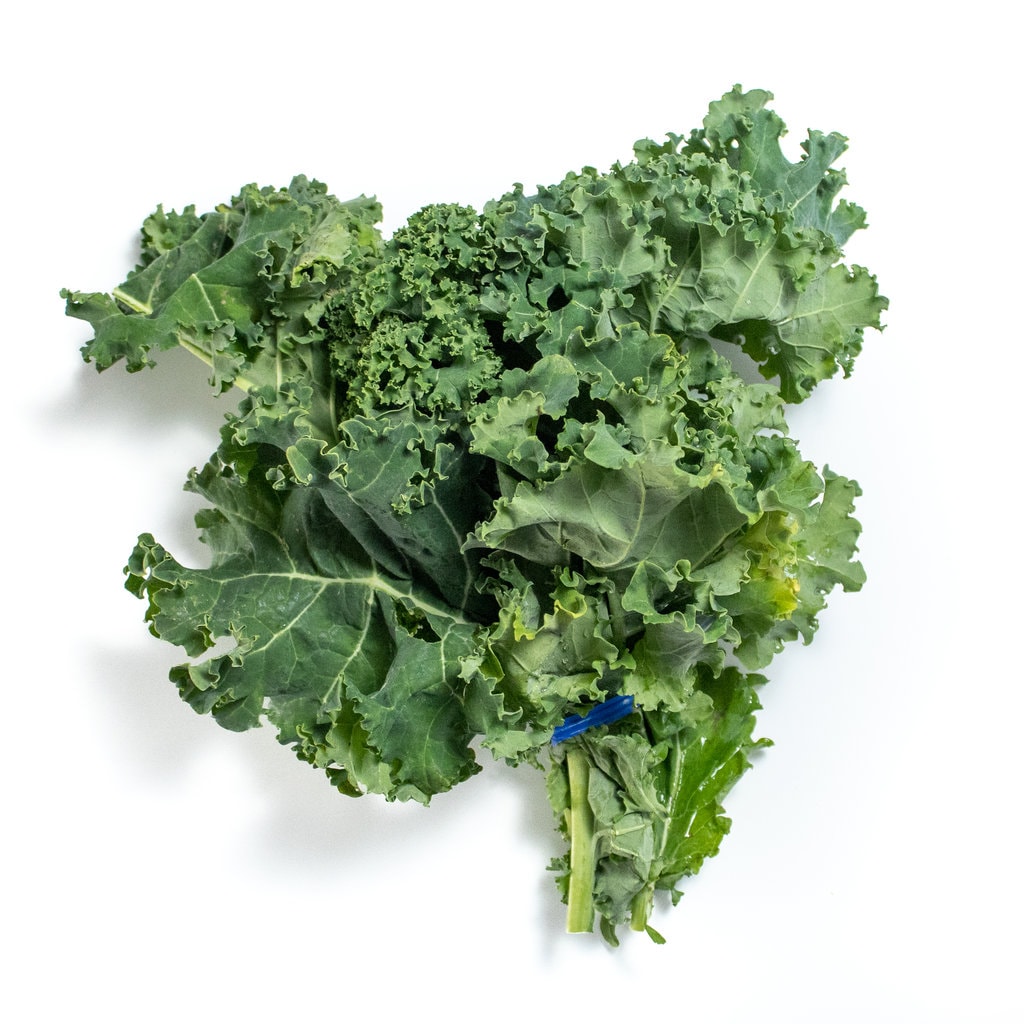
Types of Kale
There are a few types of kale to choose from, all equally nutritious.
- Curly: Like it sounds, it’s the most curly kale. It has green to pale green leaves and is the most bitter version of kale. It’s good for tossing in soups, smoothies or sautéing.
- Lactino: This type is dark green with straight, slender leaves. Lactino kale is more tender and sweeter than curly kale. It’s the best type for eating raw and is good for salads.
- Red: Looks similar to curly kale except the leaves and stems are a mix of deep red, maroon, and purple. This type has a milder flavor than curly kale.
Frequently Asked Questions
Kale can be introduced to baby as soon as they are ready to start solids, which is usually around 6 months of age.
Kale is not thought of as a choking hazard; however, it can stick to the back of baby’s throat which may cause some gagging or coughing. To minimize this, serve cooked kale finely chopped or shredded and mixed into other foods, such as rice, an omelet or meatballs. And as with any food, always supervise baby when they are eating.
No, kale is not a common allergen, but as with any food, introduce a small portion and be aware of any signs that might be an allergic reaction.
No, kale does not cause constipation. Kale is great for digestion, among many of its other health benefits.
Tools Needed
These tools will make it a lot easier for you to serve kale to your baby. For more of my favorite kitchen tools, make sure to check out my shop.
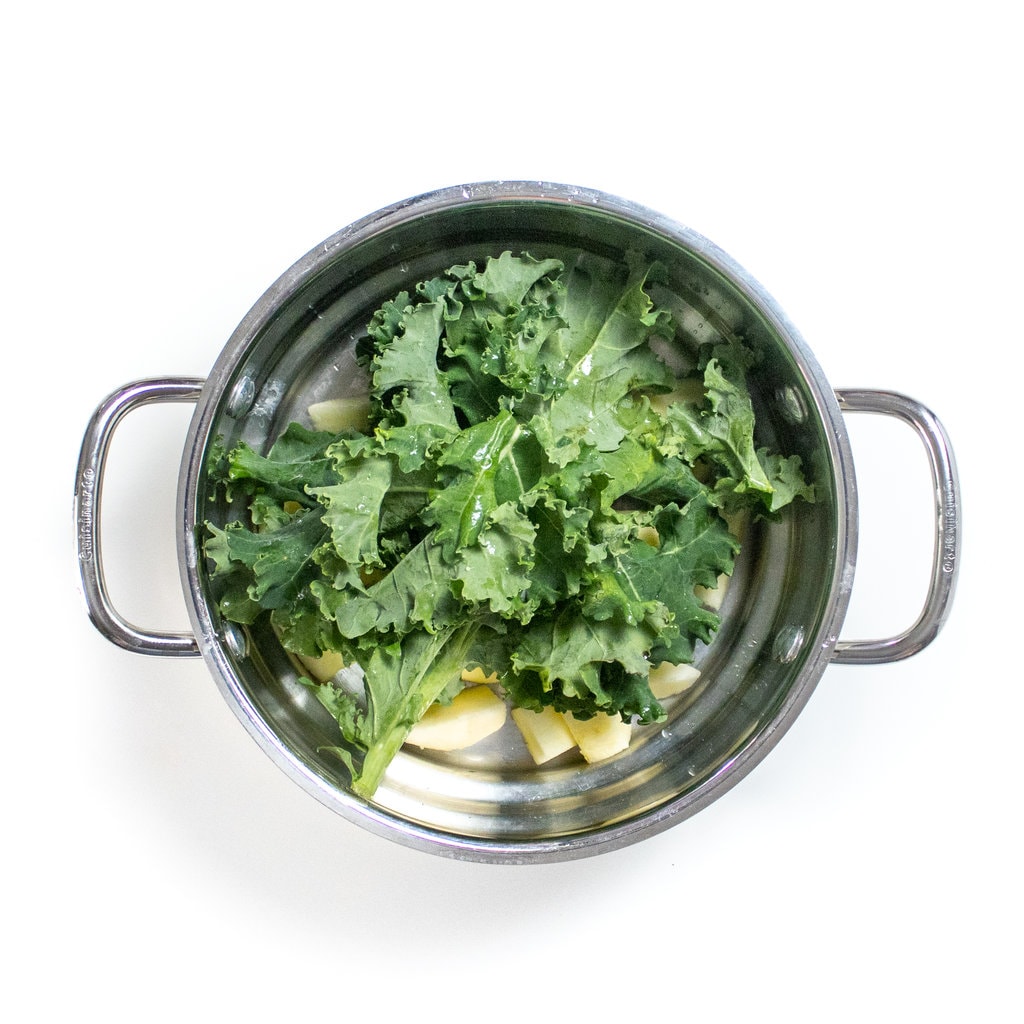
How to Prepare Kale
There are several different ways to prepare kale for your baby. Here are some of our favorite ways:
Steamed
- Coarsely chop or finely shredded kale leaves and place in a steamer basket fitted in a pot with a couple of inches of water in the bottom.
- Bring water to a boil. Cover pan, reduce heat to low and steam kale for 10 minutes or until tender.
Sautéed
- Pull the kale leaves from their stems. Coarsely chop the leaves. Rinse leaves.
- Heat a little oil in a large sauté pan over medium heat. Add the kale a few handfuls at a time, stirring after each addition so that it starts to wilt, until all of the kale is added. Cover and cook, stirring occasionally, until the kale is tender, about 5 minutes.
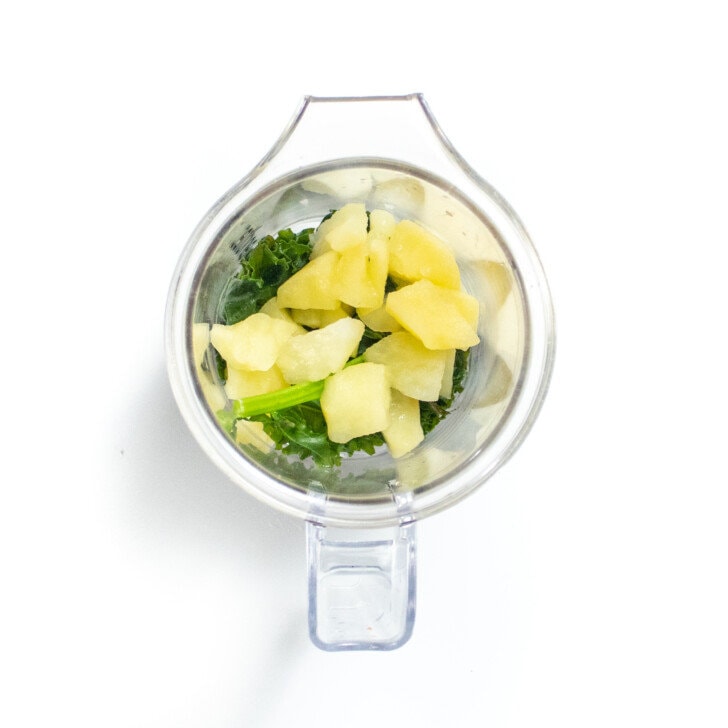
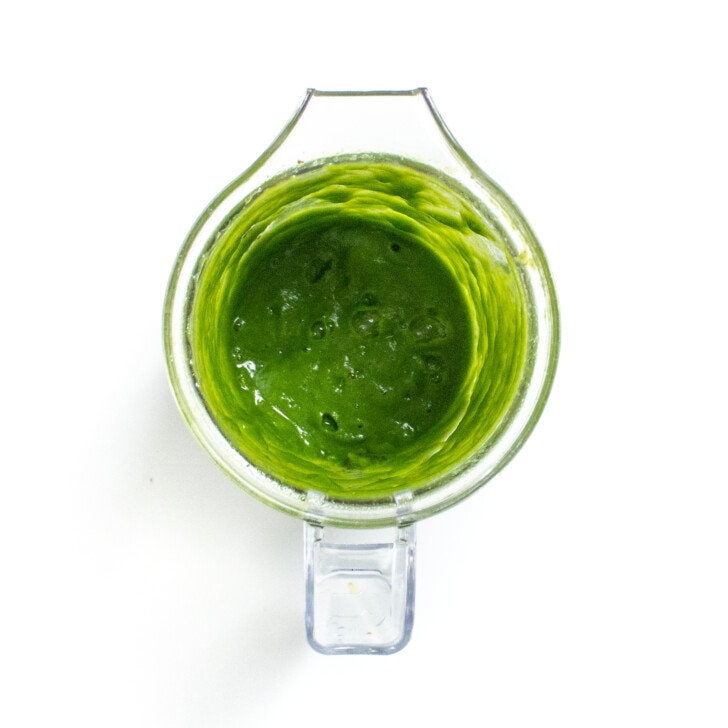
Kale Baby Puree
To make a simple baby puree with kale, just steam kale with some peeled and chop apples along with some kale to give the puree a thicker base. You can also use peas, pears, or green beans.
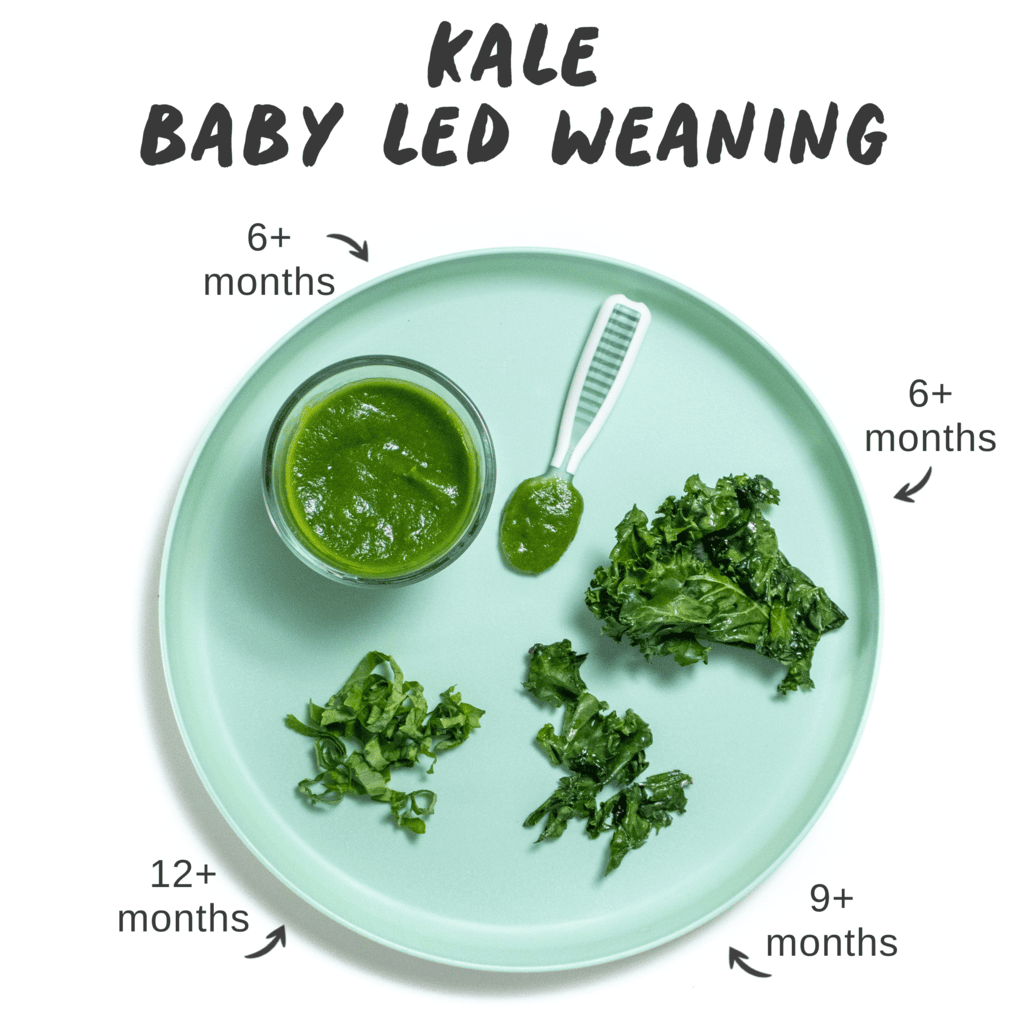
Kale for Baby-Led Weaning
Kale is a great first food for baby due to all of its health benefits. It can be served on its own with some seasonings or mixed into other dishes for a nutritional boost.
- 6+ months – cooked and finely chopped, whole or as a puree: Steam or sauteed finely chopped kale and mix it into meatballs, veggie patties, or omelets. You can also serve baby a whole kale leaf with the rib left on to help make it easier to hold. Another way is to load a gootensil with kale puree before handing it over to your baby for them to self-feed.
- 9+ months – cooked or raw, finely chopped: Serve finely chopped cooked or raw kale as a finger food for babies who are learning to use their pincer grasp. You can also continue to fold chopped and cooked kale into other foods.
- 12+ months – cooked or raw, chopped: You can start to serve your toddler more roughly chopped pieces of raw kale, in dishes such as salads. You can also continue to serve cooked kale or finely chop or shred raw kale into smaller pieces if your toddler is more accepting of this method.
Storage Instructions
Kale Puree
Refrigerator
You can store it in an airtight container in the fridge for up to 4 days.
Freezer
This puree can be frozen for up to 4 months.
- Spoon puree into a freezer storage container – do not overfill.
- Place the lid on the storage container or cover it with a piece of saran wrap and label it with the date and recipe name.
- Place the tray into the freezer and let freeze completely – preferably overnight.
- Pop out the baby food cubes and place them in a zip-lock baggie or stasher bag – don’t forget to re-label the baggie or stasher bag for future reference.
Baby-Led Weaning
You can store cooked kale in an air-tight container in the fridge for up to 4 days.
Combination Purees
While Kale Baby Puree is great by itself, it’s also super easy to mix and match with other nutrient-dense baby food purees. Give these fun flavor combos a try!
More Kale Recipes for Baby
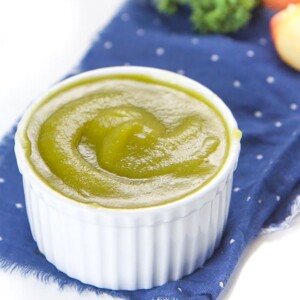
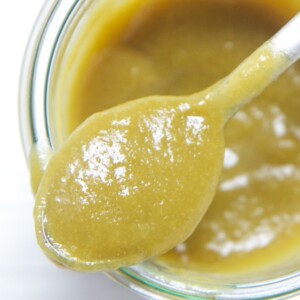
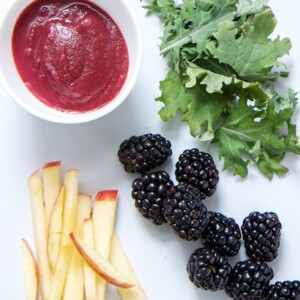
Expert Feeding Tips
- Make sure to wash kale thoroughly before serving.
- You may have heard that massaging raw kale helps to soften it and makes it easier to chew. While this is true, you don’t really need to do this for baby or toddler unless you are serving larger pieces that are not finely chopped or shredded. And you don’t need to massage kale that you’re planning to steam or sauté.
- Small pieces of kale may stick to baby’s tongue, roof of the mouth or back of the throat and cause some gagging. Minimize this by serving kale cooked, finely shredded and mixed in with other foods.
- You can also offer your baby or toddler a small sip of water to help them clear any pieces of kale that might stick in their mouth and cause gagging.
Kale Baby Puree
- 2 medium apples, peeled and roughly chopped
- 1 cup kale, roughly chopped
Kale Baby-Led Weaning
- 1 cup kale, roughly chopped
- 1 slice lemon
Kale Baby Puree
-
Steam: In a medium saucepan, bring 2″ of water to a boil over medium heat. Place the apples and then kale into a steamer basket, cover, and cook for 5-7 minutes or until tender. Reserve steamer water. Let cool slightly.
-
Puree: Place the cooked apples and kale into a blender or food processor. Turn on the blender or food processor and puree for 1-2 minutes on medium. If the puree is too thick, add 1/4 cup of the reserved liquid at a time, until you achieve desired consistency.
-
Serve: let cool slightly and then feed to baby. Store the rest of the puree in the fridge or freezer for a later meal.
Kale Baby-Led Weaning
-
Cook: heat a skillet over medium-low heat and add the olive oil. Add in the kale and let cook for 3-4 minutes or until the kale is just slighly wilted. Squeeze the lemon over the kale and stir.
-
Serve: serve the kale to your baby in an age-appropriate way – either in chopped small pieces, as a whole leaf, or as a puree on a self-feeding spoon.
Storage: you can store the kale puree in an air-tight container in the fridge for up to 4 days or in the freezer for up to 4 months. You can store the cooked kale pieces in an air-tight container in the fridge for up to 4 days.
Spices/Herbs: Adding spices to your baby’s foods is a great way to introduce more complex flavors at an early age. Some great spices and herbs to add to cooked kale are a pinch of mild curry, garlic powder, and cumin or you can add in a pinch of chopped fresh parsley, chives, mint, and cilantro.


